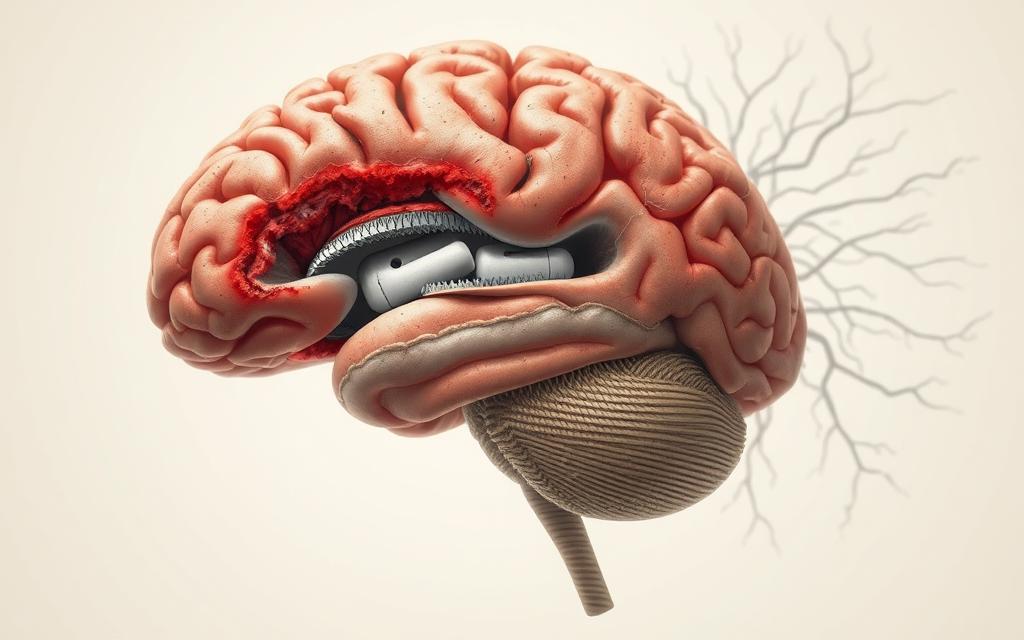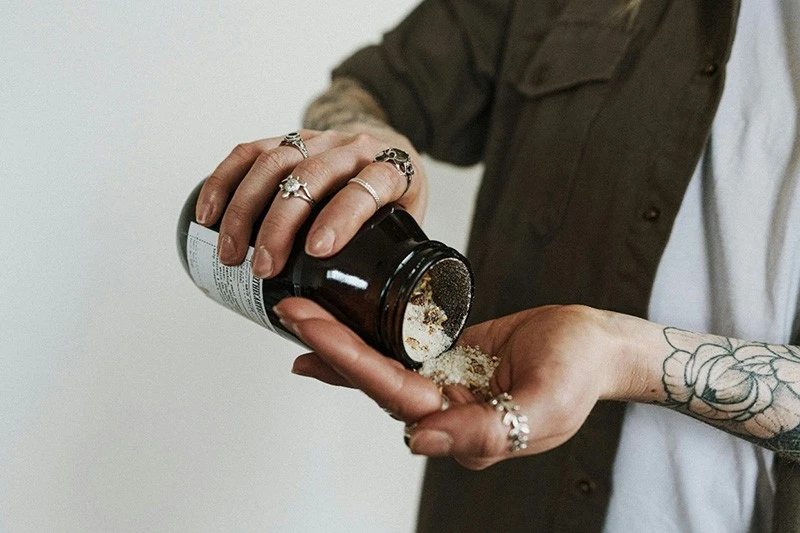Dealing with mental health and substance use together is crucial. Dual diagnosis treatment addresses both issues at the same time for better recovery outcomes. Here’s what you can expect:
- Comprehensive Care: Combines therapy, medication, and support systems.
- Key Therapies: Includes Cognitive Behavioral Therapy (CBT) and Dialectical Behavior Therapy (DBT).
- Personalized Plans: Tailored assessments help create treatment plans based on your needs.
- Medication Management: Focuses on stabilizing mental health and managing addiction.
- Support Systems: Structured living environments and family/community resources strengthen recovery.
Why does this matter? Nearly 50% of people with substance use disorders also face mental health challenges. Treating them together improves long-term success.
What is Dual Diagnosis Treatment for Co-occurring Disorders? #rehab #mentalhealth
Initial Assessment Process
In the integrated dual diagnosis model, the assessment phase plays a crucial role in identifying both mental health and substance use challenges. This process gathers vital information to create a personalized treatment plan addressing both aspects. Let’s break down how specific screening tools and assessments contribute to shaping this plan.
Mental Health and Addiction Screening
The screening phase relies on standardized tools to evaluate mental health and substance use disorders. Through structured interviews and specialized instruments, healthcare professionals collect key data to guide treatment.
Here are some commonly used tools:
| Tool | Purpose | Components |
|---|---|---|
| Addiction Severity Index (ASI) | Evaluates substance use | Covers patterns of use, medical status, employment, and social support |
| Mental Health Screening Form III | Screens for mental health issues | Focuses on depression, anxiety, and PTSD |
| Columbia-Suicide Severity Rating Scale | Assesses safety risks | Examines suicidal thoughts and behaviors |
| Structured Clinical Interview for DSM-5 (SCID-5) | Provides diagnostic clarity | Delivers a detailed psychiatric evaluation based on DSM-5 criteria |
During this step, clinicians gather detailed information, including:
- The nature and severity of symptoms
- Family history of mental health or substance use disorders
- Past treatment experiences and their outcomes
- Current medications and their effectiveness
- Patterns of substance use and associated triggers
Once the screening is complete, these findings are combined with an understanding of how the issues affect daily life, offering a well-rounded perspective.
Daily Life Impact Assessment
The results from the screening phase guide a deeper evaluation of how mental health and substance use disorders influence everyday functioning. Using a biopsychosocial approach, clinicians assess the impact across key areas:
Work and Education
- Performance and attendance at work or school
- Academic progress and struggles
- Career aspirations and obstacles
Relationships and Social Life
- Family relationships and dynamics
- Levels of social support
- Communication habits and challenges in interpersonal relationships
Physical Health and Self-Care
- Sleep quality and patterns
- Eating habits and nutritional health
- Exercise routines and physical activity
- Personal hygiene practices
This assessment often spans multiple sessions, allowing clinicians to gather a complete picture while building trust with the individual. Once all the data is collected, healthcare providers hold a feedback session to share their findings. During this session, they explain the diagnoses and discuss how mental health and substance use conditions interact, setting the stage for an informed and collaborative treatment plan.
Creating Your Treatment Plan
Once assessments are complete, the next step is creating a clear path to recovery. Your treatment plan is tailored to address both mental health and substance use challenges, crafted by a team of professionals who bring diverse expertise to the table.
Your Medical Team
| Team Member | Primary Responsibilities | Role in Treatment |
|---|---|---|
| Psychiatrist | Medication management, mental health diagnosis | Leads the medical treatment strategy |
| Addiction Specialist | Substance use treatment, recovery planning | Guides the addiction recovery process |
| Clinical Therapist | Individual/group therapy, coping skills | Provides therapeutic interventions |
| Case Manager | Care coordination, resource connection | Oversees treatment plan progress |
| Peer Support Specialist | Recovery support, lived experience | Offers practical guidance and encouragement |
Each member plays a unique role, working together to ensure your care is well-coordinated and comprehensive. After assembling your team, the focus shifts to setting specific, actionable goals to guide your recovery process.
Treatment Goals and Milestones
Your treatment plan is built around SMART goals – Specific, Measurable, Achievable, Relevant, and Time-bound. These goals adapt as your recovery evolves and are divided into three key areas:
- Stability Goals
- Staying consistent with prescribed medications
- Managing withdrawal symptoms effectively
- Implementing strategies to prevent crises
- Recovery Milestones
- Decreasing substance use
- Alleviating mental health symptoms
- Improving daily routines and overall functioning
- Long-term Wellness Objectives
- Learning and practicing healthy coping mechanisms
- Establishing a reliable support network
- Reducing the risk of relapse over time
Regular check-ins with your team ensure these goals remain relevant and are adjusted as needed. This flexible approach helps create a strong and sustainable foundation for recovery, addressing both mental health and substance use challenges in a holistic way.
Treatment Methods and Therapy Types
Treating co-occurring disorders requires approaches that tackle both mental health issues and addiction at the same time. This integrated focus ensures that neither condition is addressed in isolation, which is key to effective recovery.
Cognitive Behavioral Therapy (CBT) Basics
CBT is all about helping individuals recognize and change harmful thought patterns that contribute to addiction and mental health struggles. It’s particularly impactful for those with mood or anxiety disorders, as they are twice as likely to develop substance use disorders.
| CBT Component | Purpose | Practical Application |
|---|---|---|
| Thought Pattern Recognition | Spot negative thinking cycles | Daily journaling to analyze thought habits |
| Behavioral Modification | Adjust harmful responses | Developing healthier coping strategies |
| Skill Development | Build resilience | Practicing stress management techniques |
| Relapse Prevention | Sustain recovery progress | Identifying triggers and creating response plans |
Dialectical Behavior Therapy (DBT) Overview
DBT is designed to help individuals better manage their emotions and tolerate distress. It’s especially useful for those dealing with intense emotional challenges alongside substance use issues.
The therapy revolves around four main components:
- Mindfulness: Staying grounded in the present moment
- Distress Tolerance: Handling crises without making them worse
- Emotion Regulation: Managing overwhelming feelings
- Interpersonal Effectiveness: Building and maintaining healthy relationships
In addition to these techniques, trauma-focused therapies often complement DBT to address deeper, underlying triggers that may fuel addiction.
Trauma Treatment Options
Trauma-focused therapies are a crucial part of treatment, especially since nearly 45% of individuals with substance use disorders also experience PTSD. These therapies aim to help patients process past traumas while working toward addiction recovery.
| Treatment Type | Primary Focus | Expected Outcomes |
|---|---|---|
| EMDR | Processing traumatic memories | Reduced emotional intensity and fewer cravings |
| Cognitive Processing Therapy | Challenging trauma-related thoughts | Better coping mechanisms |
| Prolonged Exposure | Safely confronting trauma memories | Less avoidance and greater emotional balance |
Research consistently shows that addressing trauma and addiction together leads to better results than treating them separately. For example, studies on veterans reveal that among those with PTSD, 34.2% of men also struggled with alcohol use disorder, while 17.3% faced other substance use disorders. This highlights the importance of comprehensive, integrated care for long-term recovery.
sbb-itb-17645e5
Managing Medications
Effectively managing medications is a cornerstone of dual diagnosis treatment. Research shows that individuals with mood disorders are nearly twice as likely to develop substance use disorders, highlighting the need for a comprehensive approach. The right mix of medications can address both mental health challenges and addiction recovery.
Addiction Treatment Medications
Medication-assisted treatment (MAT) plays a key role in easing withdrawal symptoms and curbing cravings during recovery. The choice of medication depends on the individual’s substance use history and specific needs.
| Medication Purpose | Common Examples | Primary Benefits |
|---|---|---|
| Withdrawal Management | Buprenorphine, Naltrexone | Eases cravings and minimizes withdrawal symptoms |
| Relapse Prevention | Acamprosate, Disulfiram | Supports long-term sobriety |
| Stabilization | Methadone, Suboxone | Aids in transitioning to a stable recovery phase |
Mental Health Medications
Medications for mental health are tailored to address specific diagnoses and symptoms. Statistics reveal that 37% of people struggling with alcohol abuse and 53% of those with drug abuse also have at least one serious mental illness. This overlap underscores why medication management is so critical.
Here are some common psychiatric medications:
| Medication Type | Treats | Key Benefits |
|---|---|---|
| Antidepressants | Depression, Anxiety | Elevates mood and reduces anxiety |
| Mood Stabilizers | Bipolar Disorder | Controls extreme mood swings |
| Antipsychotics | Psychotic Disorders | Helps manage hallucinations and delusions |
| Anti-anxiety Medications | Anxiety Disorders | Alleviates panic attacks and persistent anxiety |
Medication Check-ups and Changes
Once the right medications are prescribed, ongoing monitoring becomes essential. Regular check-ups help fine-tune treatment plans and improve outcomes.
Key elements of medication management include:
- Initial Assessment: A detailed evaluation of the patient’s medical history and current prescriptions.
- Regular Monitoring: Keeping track of both physical and mental health symptoms over time.
- Dosage Adjustments: Tweaking medication doses based on how well the patient responds and any side effects.
- Open Communication: Encouraging honest discussions between the patient and healthcare provider.
The frequency of these check-ups often depends on the individual’s needs. Early in treatment, more frequent visits may be necessary to ensure medications are effective and side effects are manageable. During these appointments, providers assess progress, address any challenges, and make adjustments to keep recovery on track.
This ongoing vigilance is critical for successful medication management in the recovery journey.
Support Systems for Recovery
Recovery from dual diagnosis isn’t just about clinical treatment – it also thrives on robust support systems. These include structured living arrangements and strong family or community networks that play a crucial role in maintaining progress.
Structured Living and Daily Routines
Structured living environments offer a sense of stability, helping individuals rebuild their lives with organized routines. These routines encourage healthy habits and provide a framework for staying on track. Here’s an example of what a typical day might look like in such an environment:
| Time | Activity | Purpose |
|---|---|---|
| 7:00 AM – 8:00 AM | Wake-up, Hygiene, Breakfast | Start the day with structure and self-care |
| 8:00 AM – 12:00 PM | Work/School/Therapy | Develop responsibility and life skills |
| 12:00 PM – 1:00 PM | Lunch and Social Time | Promote social interaction and nutrition |
| 1:00 PM – 5:00 PM | Continued Daily Activities | Encourage productive engagement |
| 5:00 PM – 7:00 PM | Exercise/Free Time/Dinner | Support physical health and relaxation |
| 7:00 PM – 8:00 PM | Support Group Meetings | Build connections within the recovery community |
| 8:00 PM – 10:00 PM | Personal Time/Curfew | Allow for relaxation and proper rest |
These routines align with integrated treatment strategies, reinforcing positive behaviors and creating a foundation for long-term recovery.
There are several types of structured living arrangements to suit different needs:
- Halfway Houses: These facilities are often state-funded and provide strict supervision, mandatory counseling, and clear house rules.
- Three-Quarter Houses: These offer more independence while maintaining a supportive structure.
- Private Recovery Homes: Privately funded homes that vary in amenities, offering tailored support and flexible programs.
These environments not only reduce exposure to relapse triggers but also promote accountability and help residents build essential life skills.
Family and Community Resources
In addition to structured living, support from family and the community can significantly strengthen recovery efforts. Research shows that individuals with active family involvement are more likely to stay in treatment and achieve lasting sobriety.
Many treatment centers now include family-focused programs, such as therapy sessions (both in-person and virtual), educational workshops, and group counseling. These initiatives aim to improve communication, address underlying issues, and rebuild trust within families.
The Berman Center highlights the importance of social connections in recovery:
"Having a strong social support system significantly boosts recovery chances from addiction. Plus, when family members join in on therapy sessions, it helps improve communication, tackle problems, and strengthen family bonds".
Communities also offer a variety of resources to support recovery, including:
| Resource Type | Benefits | Typical Services |
|---|---|---|
| Family Support Groups | Share experiences and coping strategies | Meetings like Al-Anon or Nar-Anon |
| Educational Workshops | Deepen understanding of addiction | Family education programs |
| Crisis Services | Provide immediate help and intervention | 24/7 helplines and crisis response teams |
| Peer Support Networks | Foster connection with others in recovery | Group meetings and social activities |
Engaging with these resources regularly helps individuals stay accountable while maintaining steady progress on their recovery journey.
Next Steps in Recovery
Recovering from addiction and mental health challenges doesn’t end with initial treatment – it requires continuous care and support. Post-treatment recovery builds on earlier therapy and support systems, creating a bridge between treatment and long-term wellness.
| Recovery Component | How to Implement | Outcome |
|---|---|---|
| Professional Support | Attend regular therapy sessions and manage medications effectively | Stabilized mental health and reduced risk of relapse |
| Community Engagement | Join support groups and alumni programs | Sustained accountability and peer connections |
| Daily Structure | Establish a routine with planned activities and wellness practices | Improved time management and fewer triggers |
| Health Management | Focus on exercise, balanced nutrition, and quality sleep | Better physical and mental health |
These steps extend the structured approach discussed earlier into daily life, ensuring recovery becomes part of everyday practice. Professional guidance and community involvement remain cornerstones of this journey.
"Dual diagnosis recovery lasts a lifetime. During your recovery journey, you need to acquire the coping skills and support necessary to minimize the risk of relapse."
For many, transitioning to Intensive Outpatient Programs (IOPs) provides essential ongoing support. IOPs typically include 9–15 hours of weekly treatment spread over 3–5 days, offering therapy, group counseling, and medication management.
The Substance Abuse and Mental Health Services Administration (SAMHSA) highlights:
"Recovery is a process of change through which individuals improve their health and wellness, live self-directed lives, and strive to reach their full potential."
Achieving long-term recovery involves consistent attention to both mental health and addiction challenges. Key elements include:
- Regular therapy sessions to address mental health needs
- Medication management with routine check-ins
- Dual diagnosis support groups to maintain accountability and connection
- Structured daily routines filled with purposeful activities
- Engagement with family and community resources for added support
Recovery isn’t a straight path – it’s a journey that evolves over time. Regular collaboration with your healthcare team ensures that your treatment plan adapts to meet your ongoing needs.
FAQs
What are the advantages of treating mental health and substance use disorders together in dual diagnosis treatment?
Treating mental health challenges and substance use disorders together through dual diagnosis treatment offers several important benefits. By addressing both conditions simultaneously, care is tailored to the individual, helping them recognize the ways these issues are connected. This combined approach not only lowers the chances of relapse but also equips patients with the tools to manage mental health symptoms and substance use triggers more effectively.
On top of that, dual diagnosis treatment supports overall well-being by creating a recovery plan that looks at the bigger picture. Many patients report improved mental clarity, greater emotional balance, and increased motivation as they make progress in both areas. By treating both conditions as part of a unified process, this approach fosters better outcomes and helps individuals achieve a more fulfilling life.
How do CBT and DBT help in treating co-occurring mental health and substance use disorders?
Cognitive Behavioral Therapy (CBT) and Dialectical Behavior Therapy (DBT)
When it comes to treating dual diagnosis – where mental health conditions overlap with substance use disorders – Cognitive Behavioral Therapy (CBT) and Dialectical Behavior Therapy (DBT) stand out as effective approaches.
CBT zeroes in on recognizing and reshaping negative thought patterns that drive unhealthy behaviors. By working through these patterns, individuals can better handle triggers, adopt healthier coping mechanisms, and lower their risk of relapse.
DBT, meanwhile, focuses on teaching practical skills like mindfulness, managing intense emotions, and tolerating distress. It also emphasizes improving interpersonal relationships, which can be particularly helpful for those navigating the complexities of dual diagnosis.
By combining these therapies, individuals gain a comprehensive toolkit for tackling the unique challenges of co-occurring disorders, paving the way for lasting recovery and emotional stability.
How do family and community support systems contribute to recovery during dual diagnosis treatment?
Family and community support play a key role in recovery during dual diagnosis treatment. They offer emotional backing, help individuals stay focused on their goals, and build a reliable foundation for long-term progress. These support systems can ease feelings of loneliness and nurture a sense of belonging – critical factors when addressing both mental health issues and substance use challenges.
When families get involved, communication and understanding often improve, making it easier for loved ones to meet the individual’s specific needs. On the other hand, community support – like peer groups or local organizations – provides shared experiences and a sense of accountability, which can make navigating the recovery journey smoother and more effective.


